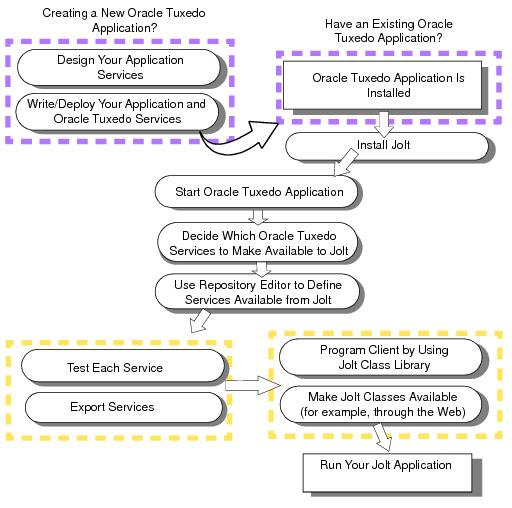Creating a Jolt Client to Access Oracle Tuxedo Applications
The main steps for creating and deploying a Jolt client, are described in the following procedure and in the following figure.
- Ensure you have created an Oracle Tuxedo system application.
- Install the Jolt system.
- Use the Bulk Loader utility to load Tuxedo services into the Jolt Repository Database.
The following table shows the mapping relationship between the Jolt repository data types and Tuxedo services data types.
Table 1-2 Mapping Relationship Between Jolt Repository Database and Tuxedo Services Data Types
Tuxedo Data Type Jolt Respository Data Type char (byte)byteshortshortintintegarfloatfloatdoubledoubleboolbooleanlong longlongstruct nestedstructnameview32stringstringstringstringNote:
The long type size of Tuxedo service can be 32 bits or 64 bits. If the Tuxedo service uses 32-bit long type, map it tointegerin Jolt Client. Otherwise, if the Tuxedo service uses 64-bit long type, map it tolongin the Jolt Client.Since Java does not support unsigned data type, to use the unsigned data types in Tuxedo services, you need to map them to Jolt data types, which have the same storage space. For example, "
unsigned int" should be mapped to "integer" in Jolt client. Besides, if you want to show the exact value of unsigned data type in Jolt client, you need to do additional casting works in Java. - Create a client application by using the Jolt Class Library.
The following documentation shows you how to program your client application using the Jolt Class Library:
- Using the Jolt Class Library
- Oracle Jolt API Reference
- Run the Jolt-based client applet or application.
Figure 1-5 Creating a Jolt Application

Parent topic: Introducing Oracle Jolt